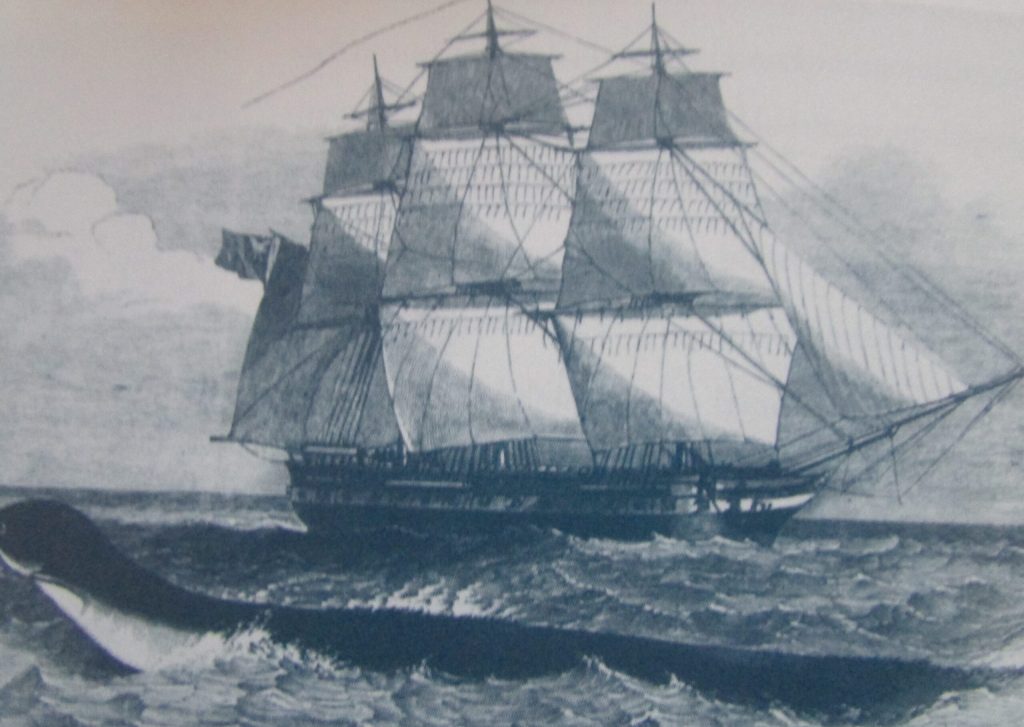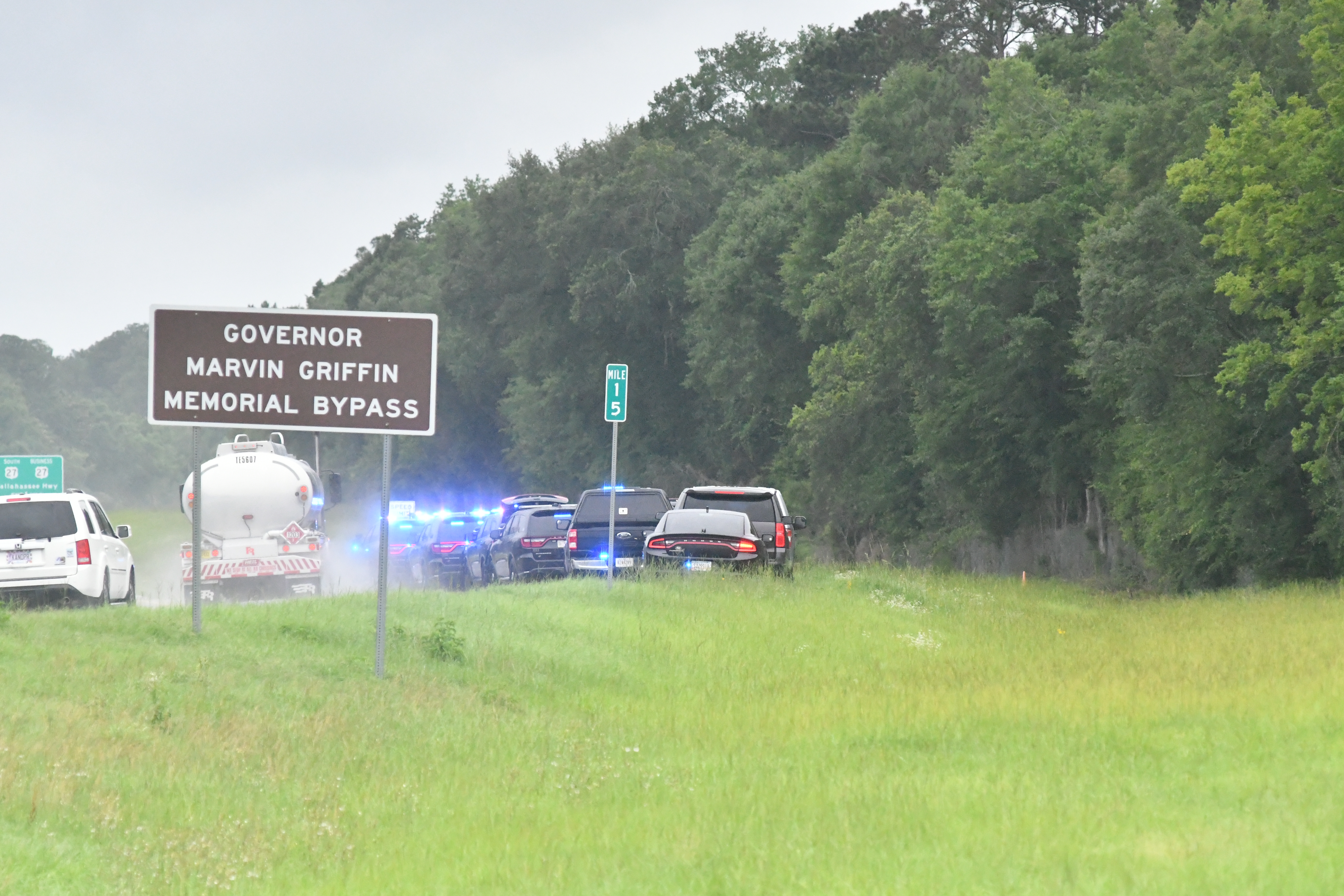A Hard Journey to Serenity-Part 2
Published 1:23 pm Sunday, September 22, 2024
|
Getting your Trinity Audio player ready...
|
After last week’s adventure on Blackbeard Island, I thought this would be the perfect time to find out more about this island’s namesake. A trip to the water’s edge seems to be the best place to enjoy a small picnic. I brought us lawn chairs and pimento cheese sandwiches.
Edward Teach, who was known as the notorious pirate, Blackbeard, was born in Bristol, England, around 1680. Not much is known about his early life except that he did know how to read and write. This was a big accomplishment for people in that era, because having an education was rare, especially if you were poor. During his life, Teach did have many aliases, but always kept his initials, E. T.
In the 1690s, being a privateer seemed to be the best career path. This meant that the government would pay ships’ captains to go after the enemy. An enterprising privateer could double deal and keep the ship along with some of the cargo, giving just a share of what was captured to the government. This is the career that Teach chose to “help” England against her enemies.
The territory that Teach loved to patrol was the busy shipping lanes of the Atlantic Coast along North Carolina and on down to Georgia and Florida, then over into the Gulf of Mexico. Here, there were many Spanish gallons just over flowing with gold, silver and jewels that were heading home. As a privateer, it seemed that Teach was working with the British government. However, he was not just targeting the enemy but other ships as well. This made what he was doing piracy.
Teach was a natural and took the pirate world by storm. He went from being the captain of a sloop, armed with 6 cannons and a crew of 70 men, to having several large, well-armed ships and a crew of 300, in just one year. It was during this time, that Blackbeard acquired his famous pirate ship, “Queen Anne’s Revenge”. He had captured a French ship named, “La Concorde”, and chose her to be his flag ship. He then renamed her.
By now, he had acquired a reputation as a “super” pirate. In 1713, on the island of Jamaica, Teach’s name as Blackbeard, was first mentioned. Next, he became known in the Bahamas as well as around the Gulf and Atlantic islands.
Blackbeard was a big man, well over six feet tall and broad shouldered. However, his nickname probably came from the fact that he had a heavy, black beard and long black hair, which he braided and tied with ropes. Perhaps, the fact that while in battle, he often tied tobacco with slow burning ropes into his beard, then set it on fire which produced a cloud of eye stinging smoke, made him notorious. This also brought home how dangerous he was. While wielding pistols, knives and swords, he would go after his enemies. He was even known to go after his crew, if someone made him angry. Not only was Blackbeard an expert marksman with a pistol but he also had deadly accuracy with knives and swords, too.
It is said that he truly resembled the devil and boasted, that he and Satan were brothers, a reputation he would use to his advantage. He also would bellow out that the devil knew where he had buried his treasure and whichever of them lived the longest, would have it.
It is said that Blackbeard also had a legendary crew member named Israel Hand. Blackbeard made him the captain on one of his ships that was named, the “Walrus”. Also, sailing on this pirate ship were the legendary Long John Silver and Billy Bones. Hand supposedly died at the “Pirate House Tavern and Inn” in Savannah, while singing and shouting for someone to bring him more rum. It is believed that author, Robert Lewis Stevenson, either became inspired by Hand’s story, or became haunted by him while staying in the room where he had died. This is when Stevenson wrote his famous book, “Treasure Island”.
At one time, Blackbeard did try to settle down, but that did not last. Seems he married a rich woman from Charleston, South Carolina, who became his fourteenth wife. She was the only one he “married” that was really a legal marriage. Most of the others were fake and performed on board his ship by a crewman. Most of the names of these brides he’d forgotten as soon as he left port. However, he did remember wife number fourteen, and not in a good way, for he beheaded her and buried her somewhere on Blackbeard Island.
Blackbeard’s final battle took place off the coast of North Carolina. Drinking heavily for several days and nights, he discovered that his arch enemy, Lieutenant Robert Maynard, of the British Navy, had anchored his ship, the “Ranger”, just off Ocracoke Island. Early in the morning of November 22, 1718, Maynard’s ship approached that of Blackbeard’s.
Still feeling the effects of nights of drinking, Blackbeard dared Maynard to come aboard his vessel and fight, man to man, to see who would rule this territory. Maynard yelled back that he did not have a row boat because most of his men were ashore. This was a lie. Maynard knew that he had a good chance to capture Blackbeard, for they were in a shallow harbor. One wrong move and you could easily run aground. Maynard also had most of his men hide below decks, making it seem like he had just a skeleton crew. Meanwhile, word spread of the fight and people gathered on the high banks to watch. Everyone knew that someone would die, and they wanted to get in on the betting of who this would be.
Blackbeard aimed at Maynard’s ship and fired a cannon shot to its broadside. The few men which were on the deck, fell dead or wounded. Blackbeard then tried to slip behind a sandbar but in his drunken state, miscalculated, and ran aground, but so did Maynard. Maynard knew that he could not take another broadside attack, so he ordered three men to slip onto the upper deck.
When Blackbeard saw just a few men, he and his crew boarded Maynard’s ship. This is when the rest of Maynard’s men came out of the hold and a fierce battle raged. Blackbeard and Maynard targeted each other, captain to captain. Maynard lunged at Blackbeard and his sword hit Blackbeard’s cartridge belt which was cut and fell onto the deck. Blackbeard returned by cutting Maynard’s hand, but not seriously.
Maynard’s crew surrounded Blackbeard. One sword swiftly cut his face. Like a wounded animal, Blackbeard fiercely fought back. He received another cut as a sword struck his neck. Then, Blackbeard turned and faced the man who cut him. This is when that man cut off Blackbeard’s head. The battle ended when the head rolled across the deck. Some legends say that Blackbeard was dead when his head was cut off. Others say that he was standing and this was the killing blow.
With over twenty-five wounds, his body was thrown overboard. This part of the legend says that his body swam around Maynard’s ship three times before it sank down into chilling waters of Pamlico Sound. Blackbeard’s head was then placed on the bowsprit of Maynard’s ship. At the time of his death, Blackbeard was believed to have been between 35 to 40 years old.
Later, Blackbeard’s head was carried to Virginia to provide proof to the United States government that he was dead. It was then hung for a time, from a pole at the mouth of the Hampton River, as a warning to other pirates. Next, the skull was retrieved by a member of the Brethren of the Coast, a civil organization that wanted to preserve the local heritage. Later, the head was said to have become the artifact of a silversmith.
By this time, the skull was probably in very bad shape. The elements would have caused it to become brittle and the skin and hair would have been picked clean by predatory birds that did what nature had intended for them to do. One story says that it probably broke up after being placed on the pole at the Hampton River. However, the top part of the human skull is thick and the bones hard. This would have given the silversmith a bowl-shaped bone that he then covered with silver, inside and out, making it a drinking goblet. Then, on the goblet, the craftsman engraved a curse, which was directed at the government agent who had lied to Blackbeard when he told him that he would be pardoned of his acts of piracy, if he turned himself in.
Over the next 200 years, the goblet was reported to have appeared several times. Mostly, it seemed to be in the hands of several fraternities that had made it a part of their initiations. The two Virginia colleges mentioned most, are the University of Virginia and the College of William and Mary. This seems plausible for who would enjoy a fraternity party more than Blackbeard!
The next mention of the skull is when it was placed on the bottom of a very large punch bowl called, “The Infant,” which was used in Williamsburg, Virginia, at the Raleigh Tavern. Throughout the 18th century, the Raleigh Tavern was the scene of many fraternity parties and political rallies. The Burgesses, a group of men who wanted America to be free from British rule, along with other Virginians, gathered at this tavern to discuss the political events that led to the American Revolution. The tavern also served as a center for social and commercial gatherings. This was “the place”, where men gathered and the discussion would always become about the skull.
However, Adam Hays was the tavern owner in 1770, and when he sold it to James Southhall, he took a very thorough inventory and there was no mention of the silver goblet or the punch bowl on his list.
Charter members of the fraternity, Phi Beta Kappa, frequently met in the Apollo Room for private and public dinners, lectures and auctions of merchandise and property. Perhaps, they drank from the silver skull but this is conjecture. However, in an old, dusty history book that my grandfather gave me way back when, it contained the story that Thomas Jefferson drank from Blackbeard’s silver skull while at a meeting of the Burgesses. This was around the 1770s and is when Jefferson, George Washington and Patrick Henry signed the Townshend Acts, which got the ball rolling towards the American Revolution.
It is also possible that the silver skull was passed around through the different buildings in Williamsburg, like the Play Booth Theatre and the Thomas Everard House. Also, it seems that if you were invited to the Governor’s Palace or the Apollo Room and had the ability to dance the minuet, it meant that you were a cultured person who was a member of polite society. This could be true because of the fact that as history goes on, so do the sightings of the Blackbeard silver skull amongst Williamsburg society. The Raleigh Tavern burned to the ground in 1848, and while the cup would have survived, there was no mention of it in the remains. The tavern has been exactly replicated in Williamsburg’s Historical Village in the exact same place.
In 1903, historian John Esten Cooke, wrote in his book that the silver skull was still in Virginia. Then in 1930, a man named Judge Charles Whedbee, claimed that he had held and drank from the silver skull. Further evidence is in a book called, “Dig for Pirate Treasure”, which shows the picture of a collector by the name of Edward Rowe Snow, holding up a goblet shaped like the top part of a human skull.
Sometime later, Snow’s wife, donated the skull to a museum in Salem, Massachusetts. They are not sure of the authenticity because there have not been tests done on the silver skull. Also, it was reported that Mrs. Snow stated that the skull is real because it glowed red and told her to donate it. The last report, said that Blackbeard’s silver skull was in the Mariner’s Museum in North Carolina. They claim it is the real thing because it came from a museum in Salem, where it was on display.
Currently, it is supposed to be in the hands of a collector who specializes in pirate memorabilia. This is where the trail goes cold. Sure, there are lots of reports of Blackbeard’s silver skull all over North Carolina and Virginia. Many museums and shops have something like it on display. However, where the real one is remains a mystery.






